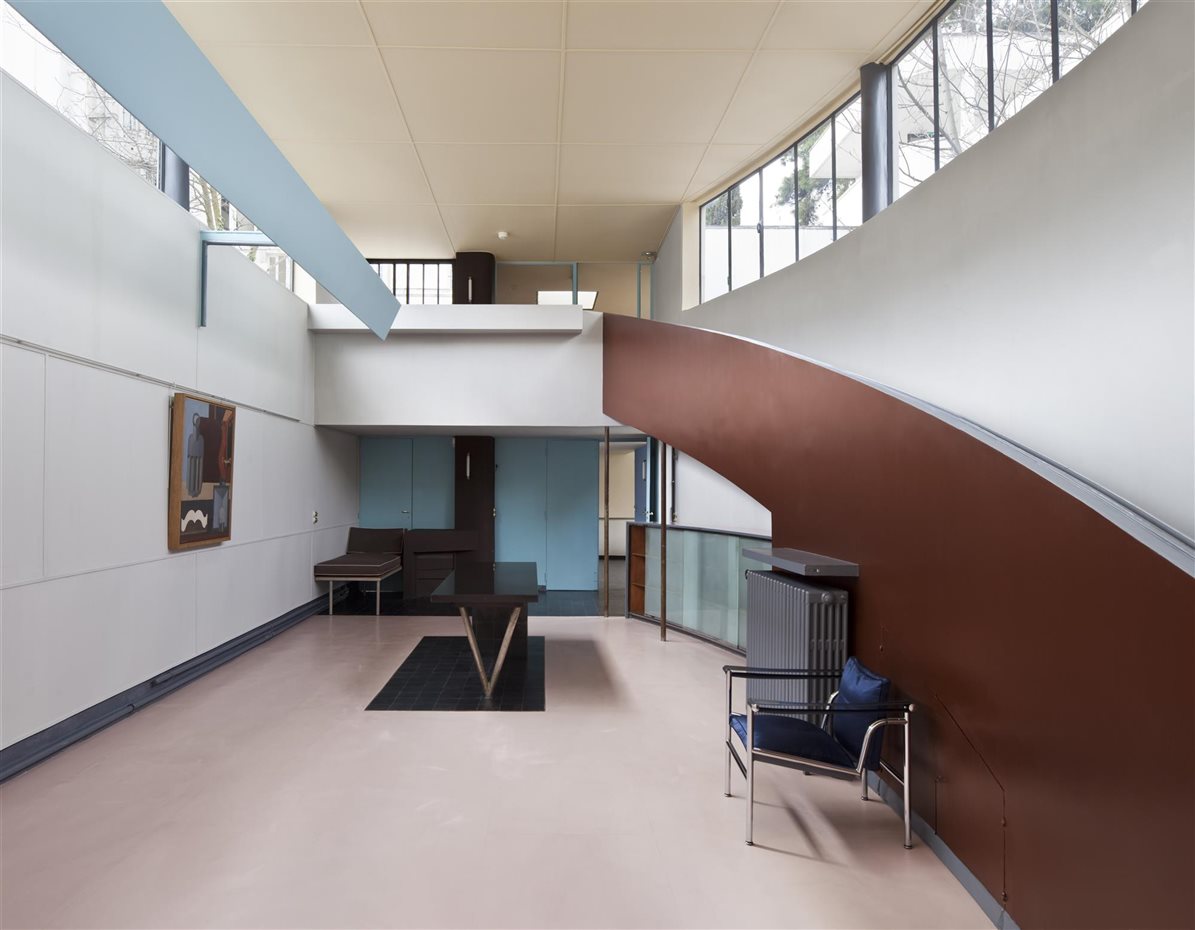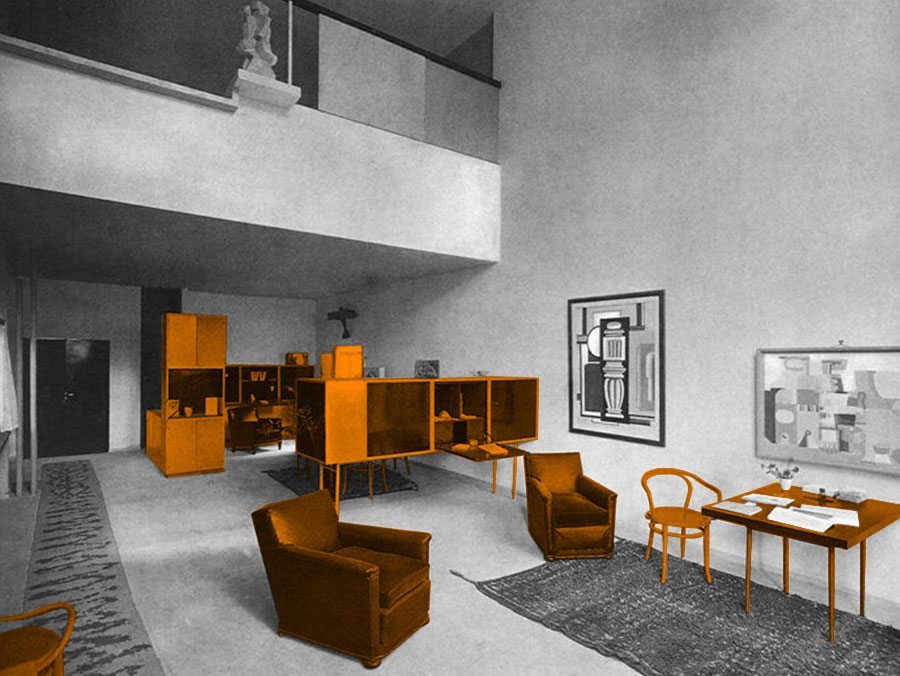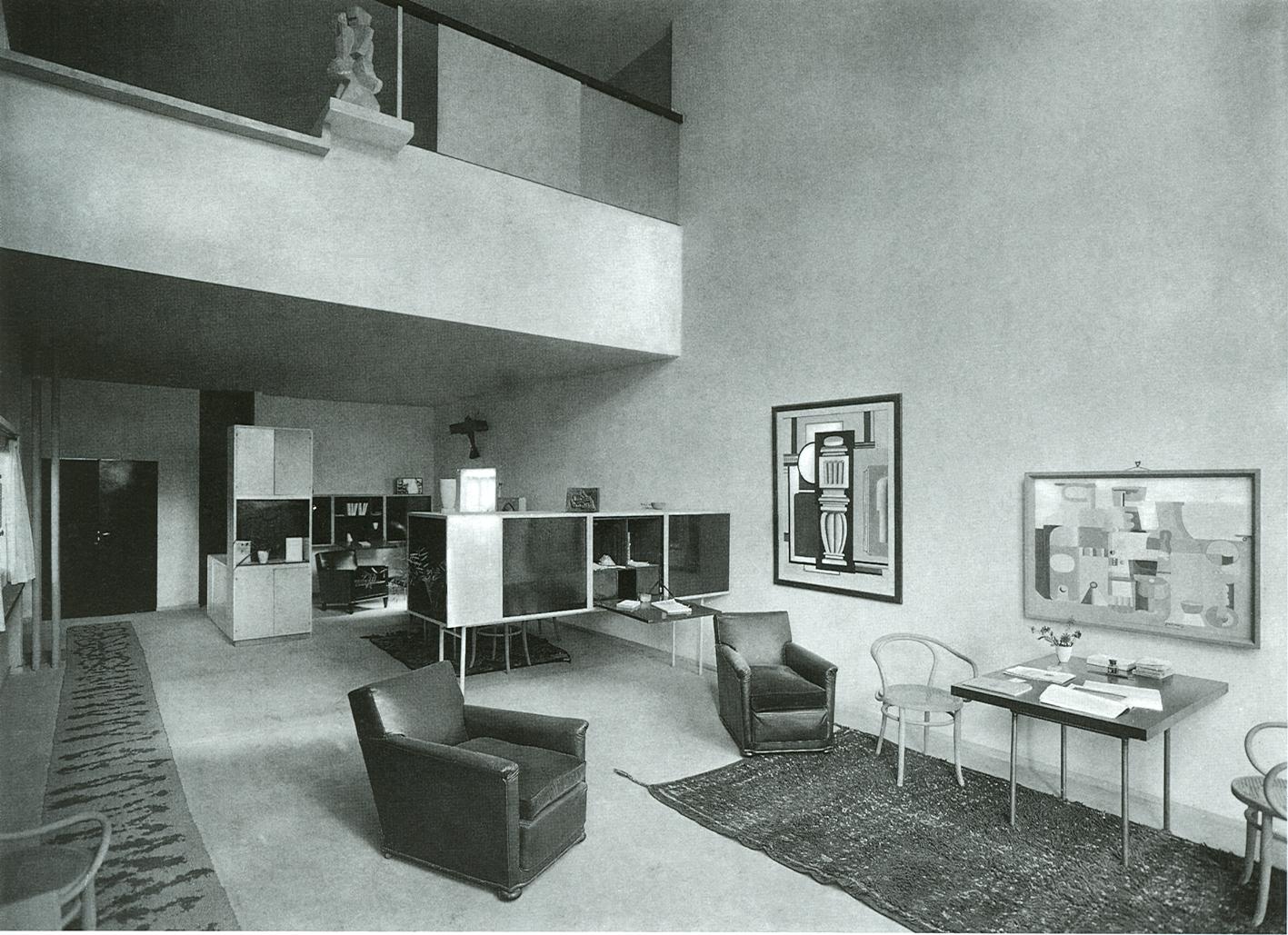
Le Corbusier’s “contemporary city” (1925) The CharnelHouse
Le Corbusier's "contemporary city" (1925) 6 . The existing congestion in the center must be eliminated. The use of technical analysis and architectural synthesis enabled me to draw up my scheme for a contemporary city of three million inhabitants. The result of my work was shown in November 1922 at the Salon d'Automne in Paris.

Villa Roche by Le Corbusier in 19231925, Paris, France Le corbusier, House styles, Architecture
Le Corbusier's ville contemporaine, as he envisaged it in 1925. In 1928, Le Corbusier was invited to enter a closed competition to find a design for the new headquarters of the Central Union of Consumer Cooperatives in Moscow. His winning proposal became the Tsentrosoyuz building in the north-east of the city, an "orgy of glass and concrete.

Le Corbusier L’Esprit Nouveau Pavilion Exposition des Arts Décoratifs Paris 1925
The public presentation of his radical Purist architectural design in form of Pavilion L'Esprit Nouveau, took place in 1925 at the Exposition International des Arts Décoratifs et Industriels in Paris. This model residence featured Purist art by Gris, Léger, Lipchitz, Ozenfant, and Le Corbusier himself.

17 obras de Le Corbusier Patrimonio de la Humanidad por la Unesco
Coordinates: 48.865633°N 2.311486°E Pavillon de l'Esprit Nouveau was a model home constructed for the 1925 International Exhibition of Modern Decorative and Industrial Arts in Paris, France. The building was designed by Swiss architects Le Corbusier and Pierre Jeanneret. [1] Building

Le Corbusier, L'Esprit Nouveau Pavilion, Paris, 1925. Download Scientific Diagram
Designed 1925-1925 as a residence for Swiss banker Raoul La Roche, Villa Roche is the quintessence of Le Corbusier's modern approach to housing.The. Projects Images Products & BIM.

Esprit Nouveau Pavillon Paris 1925 Le Corbusier Le Corbusier, Cultural Events, Paris, Shed
Le Corbusier was a Swiss-born French architect who belonged to the first generation of the so-called International school of architecture. Updated: Nov 17, 2021 Photo:.

Le Corbusier. Pabellón del Esprit Nouveau, París, 1925. Vista interior... Download Scientific
Le Corbusier (1887-1965) From Purism as Painting to Purism as Architecture To use the term "Art Deco" today is to introduce an anachronism, because to the extent that the style of this period had a name at all it was "Art Moderne," a name used in the 1920s and 1930s.

Le Corbusier & “L’Esprit Nouveau” 1925 Ramon Esteve
Architect: Le Corbusier Year: 1925 Location: Paris, France Architect Le Corbusier Built in 1925 Location Paris, France Introduction The Pavillion de L'Esprit Nouveau was a temporary building created in 1925 within the framework of the International Exposition of Decorative Arts in Paris.

Le Corbusier Pavillon De "L'Esprit Nouveau" 1925 Mikko Vierumäki Flickr
The 'rue usine' and the 'alveolar' blocks in a view (Le Corbusier 1925) Fig. 2. Cross section and detail of a 'rue usine' (FLC 28788). The word 'street' is, in this case, quite imprecise. Le Corbusier describes the streets connecting the alveolar blocks as factories. The street "is a new type of organism, a sort of stretched-out

Le Corbusier’s “contemporary city” (1925) The CharnelHouse
Designed and exhibited at the Paris Exposition des Arts Décoratifs of 1925,. "Le Corbusier's Pavillon de l'Esprit Nouveau Named One of "20 Designs That Defined the Modern World"" 12 Nov 2017.

Pavillon de l’Esprit Nouveau, 1925, Paris, France CharlesÉdouard JeanneretGris Le
Born: October 6, 1887 - La Chaux-de-Fonds, Switzerland Died: August 27, 1965 - Roquebrune-Cap-Martin, France Movements and Styles: Modern Architecture , The International Style , Purism , Brutalism Le Corbusier Summary Accomplishments "Space and light and order. Those are things that men need just as much as they need bread or a place to sleep."

Le Corbusier’s “contemporary city” (1925) The CharnelHouse
The Plan Voisin was a planned redevelopment of Paris designed by French-Swiss architect Le Corbusier in 1925. The redevelopment was planned to replace a large area of central Paris, on the Right Bank of the River Seine.

Le Corbusier Villas La Roche 1925 , Paris Le corbusier, Villa, Architecture
Le Corbusier 1 of 10 The Charnel House The Plan Voisin is a solution for the center of Paris, drawn between 1922 and 1925 by Le Corbusier. The plan for 1925 seems to be a direct transposition of the diagram of Contemporary City for three million drawn in 1922.

Gallery of Le Corbusier's Pavillon de l'Esprit Nouveau Named One of "20 Designs That Defined the
Charles-Édouard Jeanneret, more popularly known as Le Corbusier, was a Swiss-French architect, designer, painter, urban planner and writer. In 1918 the controversial father of Modern architecture befriended the Cubist painter Amédée Ozenfant after moving to Paris. The artist encouraged the young architect to paint.

1925, Expo Paris, L'Esprit Nouveau, Le Corbusier Le Corbusier, Art Deco Architecture
Charles-Édouard Jeanneret (6 October 1887 - 27 August 1965), known as Le Corbusier ( UK: / lə kɔːrˈbjuːzieɪ / lə kor-BEW-zee-ay, [2] US: / lə ˌkɔːrbuːˈzjeɪ, - ˈsjeɪ / lə KOR-boo-ZYAY, -SYAY, [3] [4] French: [lə kɔʁbyzje] ), [5] was a Swiss-French architect, designer, painter, urban planner and writer, who was one of the pioneers of what is now.

Le Corbusier, Pavillon de l’Esprit Nouveau, Paris 1925 Artribune
The formerly aristocratic Marais district had fallen into squalor, characterized by poor sanitation, disease, and overcrowding, as chronicled by Marybeth Shaw in " Promoting An Urban Vision: Le.